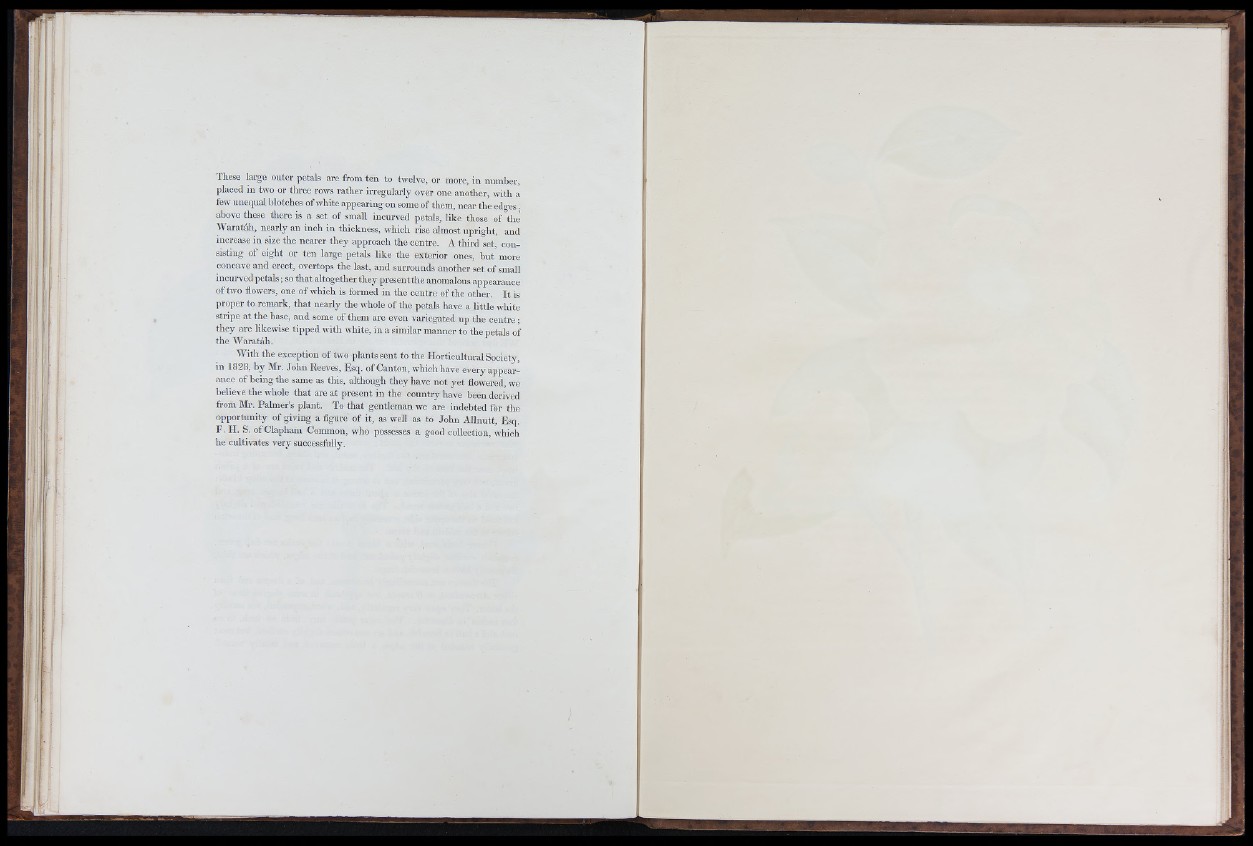
These large outer petals are from ten to twelve, or more, in number,
placed in two or three rows rath er irregularly over one another, with á
few unequal blotches o f white appearing on some o f them, near the edges.
above these there is a set of small incurved petals, like those of the
Wa ra táh, nearly an inch in thickness, which rise almost upright, and
increase in size the nearer th ey approach th e centre. A th ird set, consisting
of eight or ten large petals like the exterior ones, b u t more
concave and erect, overtops the last, and surrounds another set of small
incurved petals; so th a t altogether they present the anomalous appearance
of two flowers, one of which is formed in the centre of the other. I t is
proper to remark, th a t nearly the whole o f the petals have a little white
stripe a t th e base, and some of them are even variegated up the c e n tre ;
they are likewise tipped with white, in a similar manner to the petals of
the Waratáh.
W ith th e exception of two plants sent to the Horticultural Society,
in 1828, by Mr. Jo h n Reeves, Esq. of Canton, which have every appearance
of being th e same as this, although they have n o t y e t flowered, we
believe the whole th a t are a t present in the country have been derived
from Mr. Palmer’s plant. To th a t gentleman we are indebted for the
opportunity of giving a figure of it, as well as to John Allnutt, Esq.
F . H. S. of Clapham Common, who possesses a good collection, which
he cultivates very successfhlly.